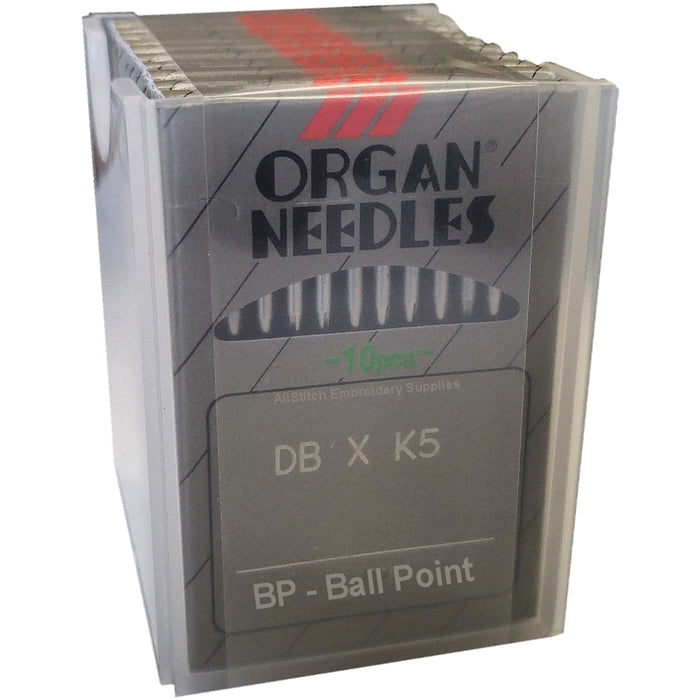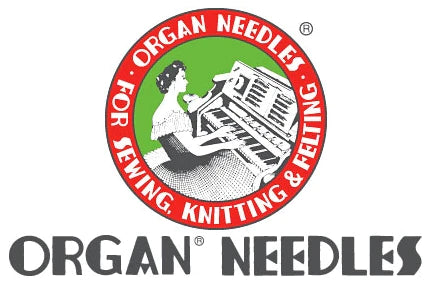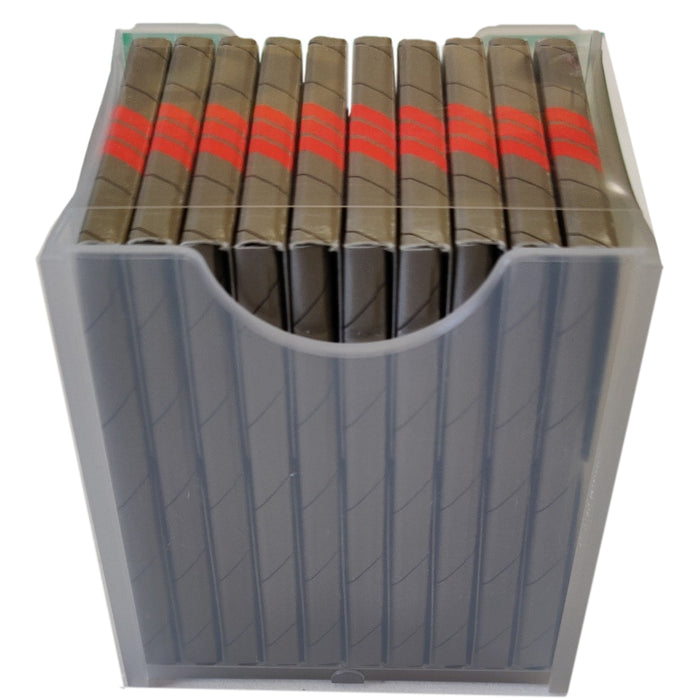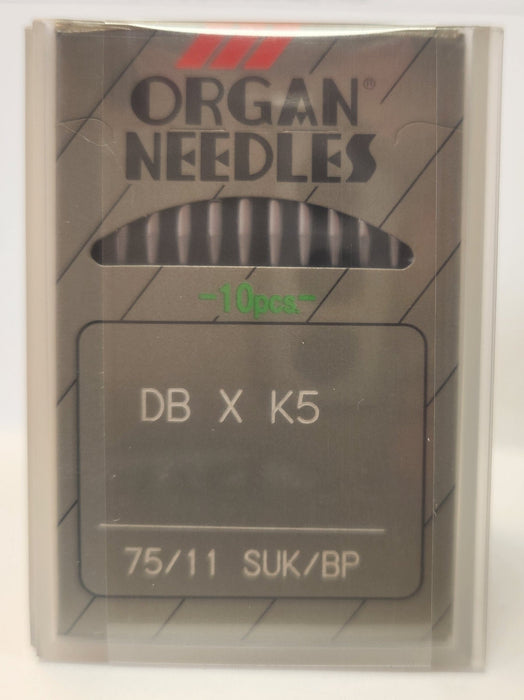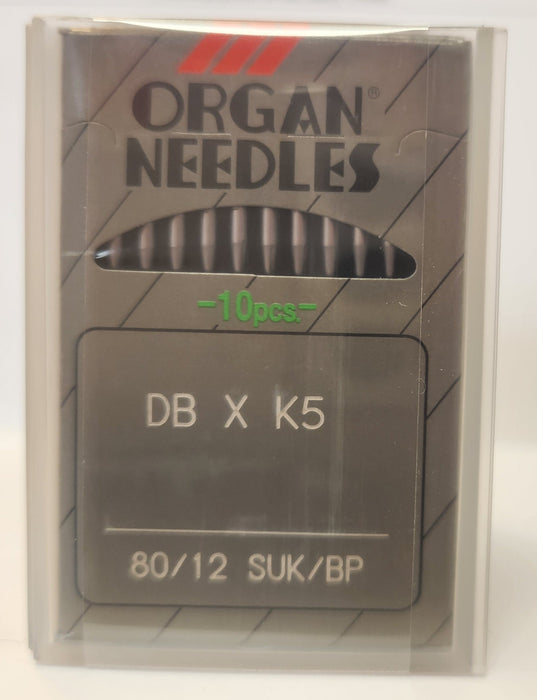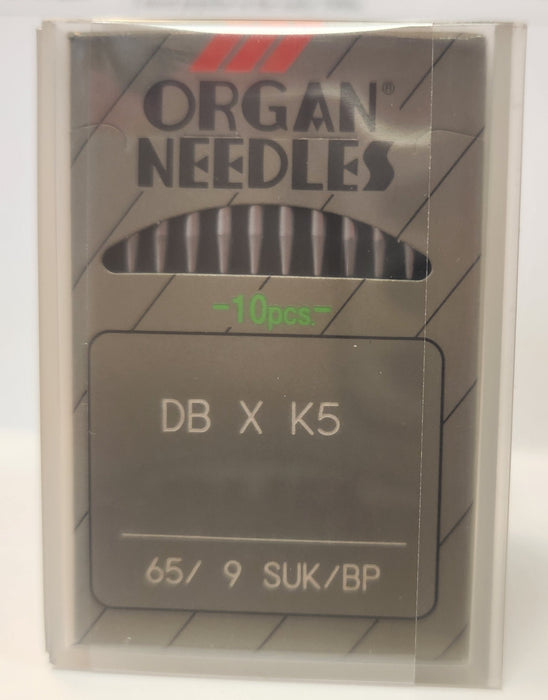
Organ DBK5BP | Round Shank | Large Eye | Ball Point | Commercial Embroidery Needle | Chrome | 100/bx
These are a standard commercial ball point needle with a round shank and a large eye.
A large eye needles is approximately one size larger than a regular eye. Unlike sewing threads used for general apparel construction, embroidery threads are fluffier, and have less tensile strength. A larger needle eye, without increased blade diameter, allows the embroidery thread to pass easily through the needles eye without fraying or snapping.
- Organ DBK5 - Commercial Embroidery Needle
- Everyday Standard Needle
- Commercial Round Shank
- DB x K5 - Large Eye
- BP - Ball Point
- 100 Needles Per Box
Round Shank Commercial Needles -100 Needles/Box
DB x K5 BP - Ball Point
DBxK5 Chrome: This embroidery needle is designed especially for industrial /commercial embroidery machines such as Tajima, SWF, Barudan, etc. The DB-K5 needle has a one size larger eye than that found in a regular needle. Unlike sewing thread used for general apparel sewing, embroidery threads are "fluffier" and have less tensile strength. A larger needle eye, without increased blade diameter, allows the embroidery thread to pass easily through the needle's eye without fraying or snapping.
Ball Point: Ball point machine embroidery needles are designed to alleviate making holes in knit or loosely woven materials. The cross fibers which constitute the knit or loosely woven materials are relatively far apart as compared to those in tightly woven materials. When an embroidery needle with a standard "set" or "sharp" point encounters one of those fibers in penetrating the fabric, it cuts right through the fiber. This creates a hole in the fabric. The ball point needle pushes aside the fiber it encounters in penetration and thereby avoids making a damaging hole in the fabric. (It is also recommended to use the thinnest possible needle for a particular fabric).

